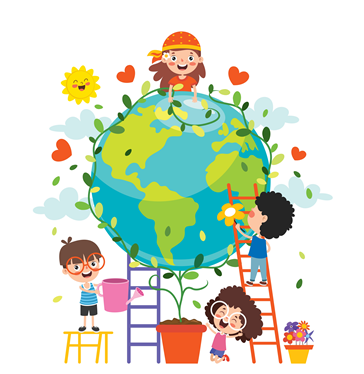Forget mosquito bites and ice cream headaches, there’s a much greater concern for your kids through summer vacation – learning loss. To discover more about learning loss that typically occurs in youth during weeks away from school, please read our article on the subject here. The intent of today’s article however, is to tackle it head on with activity inspirations that will feed your child’s thirst for knowledge through the season. These ideas focus on outdoor learning and expand beyond older summer activity concepts that we touched on in the past to account for changing times and advancing interests of kids.
3 More Activities to Keep Your Kids Learning Through Summer Vacation
1. Treasure Map
Create a treasure map that leads your kids to explore different outdoor “destinations” for learning. A visit to each destination should not only contain a literal reward but must inherently offer the opportunity to learn about wildlife, food resources, or other sustainable community concepts. Prime outdoor settings include (but are not exclusive too):
- community gardens
- local farms
- beaches
- apiaries (bee farms)
- ecological reserves
Plant a treasure (based on what your child is interested in) in each, which may require some collaboration with volunteers or management (as applicable). Include riddles and/or hints to help your child uncover where in each destination their reward is, and once discovered, spend some time exploring the outdoor space with them. This works great as a season long activity, letting you visit one destination every two weeks or so, depending on how quickly your child wants to complete the project. Just don’t forget where you hid the goodies!
2. Turn Common Summer Activities into Math Lessons
Don’t make math an afterthought in the summer because this subject experiences the greatest level of learning loss. How do you make math fun for kids who would rather mow the lawn over performing long division? Work it into your favorite summertime sports and activities.
For instance, hit the local mini-golf course and put them in charge of the score card, which makes them responsible for adding up numerical outcomes and the final rank for family members along the way. The same is true of pick up games of basketball, flag football, frolf (frisbee-golf) and more. In addition, take them to a major or minor (depending on where you live) baseball or soccer game and pour over player and team stats between innings or halftime intermissions. You can even work math into the treasure map concept addressed above, using GPS coordinates to calculate how long it will take to get to the destination by walking or biking from a given starting point.
In some shape or form math can be applied to any summertime activity that your kid loves to do, from collecting seashells to building an arsenal of water balloons to divide amongst teams at the local park. Identify the link, and let your child take the lead, letting them know (after the fact) that they just applied math to their day to day life – fun stuff included!
3. Start a Local Business
There’s nary a better way to teach your kids about sustainable communities than planting an entrepreneurial seed. Local businesses are the cornerstone of any self-sufficient city or town, and in the summer, there is a big opportunity to get your child involved in a small local outdoor business.
Need examples? It can be something as simple as starting a lemonade stand and setting up shop in your neighbourhood, or running a weekly yard/garage sale where they manage the inventory and proceeds. Or, you can take it a step further (for older kids) by creating a product and selling it by renting a table at a local farmers or artisan market. For instance, in our recent article about how to celebrate World Bee Day, we encouraged you to teach your kids how to make usable products using beeswax. The byproduct can be secured from your apiary visit (as per item #1) and then together you can create and sell useful things such as candles, lip balm, lip gloss, moisturizers, mustache wax, hair pomades, shoe and furniture polish, snowboard/surfboard wax, and/or artistic carvings.
In addition to giving them insight into how local sustainable business communities work, the concept keeps the math wheels turning (as per item #2 above) as they accept payment, figure out how to give change, and count their earnings at the end of the day.
For more on the work of the Foundation, please visit our Funded Programs page. There are many ways you can get involved with the Plant a Seed & See What Grows Foundation – you can visit our Get Involved page, Help Fundraise, or Donate Now.







